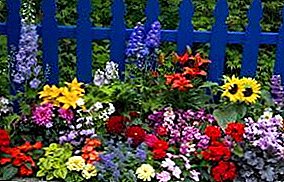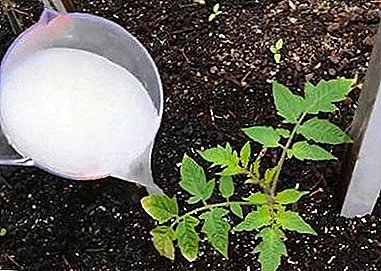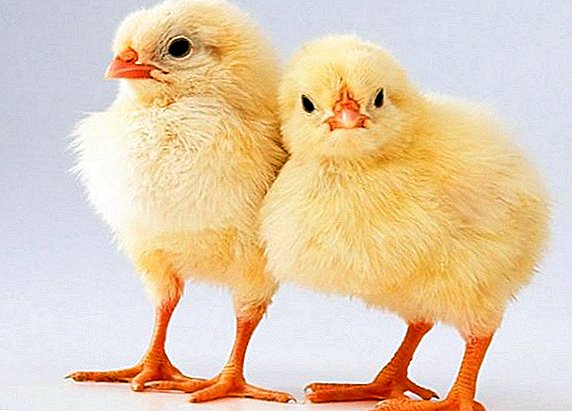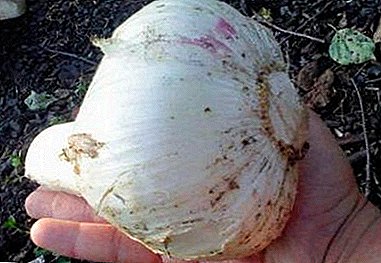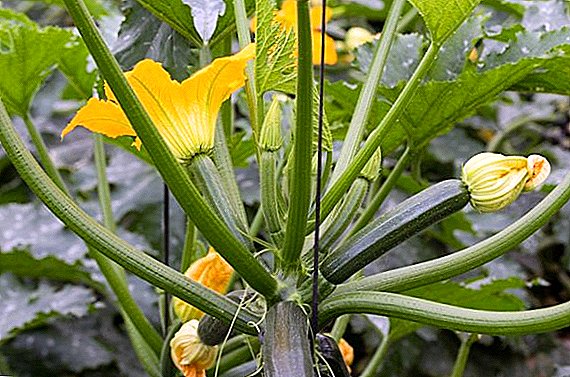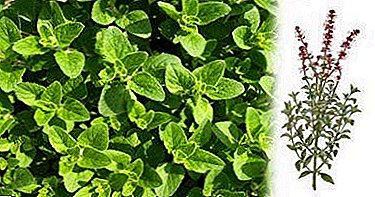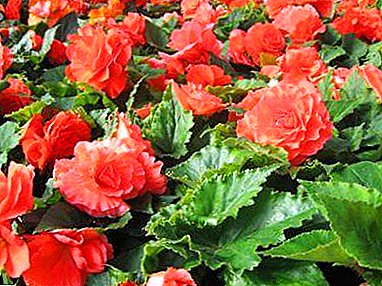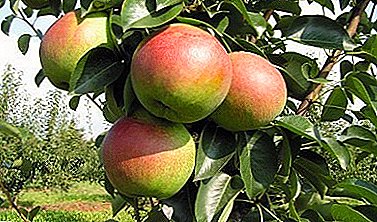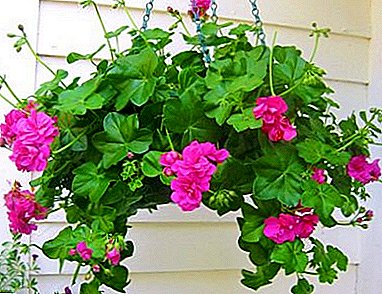
Despite the fact that geranium (Geranium) and pelargonium (Pelargōnium) are very similar, they are not the same plants. Another Johannes Burman scientist from Holland in the XVII century, suggested that pelargonium and geranium are not the same flower, despite the fact that the appearance of these plants is very similar. But until today, many flower growers believe that fragrant bushes with beautiful buds like umbrellas are geraniums.
The defining moment of this opinion is that both flowers belong to the geranium family. In total, this family includes 5 genera and more than 800 species of plants. Consider the reason for this confusion, and how both of these plants appeared in our homes.
Zhuravelnik, what is this plant?
This plant is widely distributed throughout the world. As a cultivated plant, geranium was grown in England in the middle of the 17th century; it appeared in our country at the beginning of the 18th century. The plant became widespread at the beginning of the XIX century.
Geranium can be propagated both by seed and vegetatively. It can be a herbaceous plant or a half-shrub. Prefers a loose, moisture-permeable soil. It grows well on neutral, slightly acidic and acidic soils. The plant is shade-tolerant and frost-resistant, it can easily adapt to any weather conditions, which is why it is often grown in gardens.
Flowers are large and beautiful - 1-3 buds are formed on the peduncle. Flowers with 5 petals, which are evenly distributed in the open plane, the same almost round. It has 10 stamens with well-developed anthers. The color is very varied from yellow to violet.
Interesting! Geranium is translated from Greek Geranium (crane) - the fruits of the culture are similar in shape to the head of a crane with an open beak, therefore it is also called a crane.
The most beautiful and common varieties:
- Oxford;
- gorgeous
- Georgian
The leaves grow on the cuttings and have the following cut:
- Palmatite.
- Palatine.
- Cirrus
A photo
In the photo you can see the types of plants, to get acquainted with their names, they all differ in bright flowering and leaf splendor.
Oxford Geranium:

Geranium magnificent:

Scented Geranium:

Forest Geranium:

Which flower is confused, is it the same or not?
Pelargos in Greek is a stork. This suggests that geranium and pelargonium belong to the same family. Pelargonium comes from South Africa, unlike geraniums. The plant is drought-resistant and light-loving, if it grows in room conditions, then install a flower pot should be on the southern window-sill, where there is a lot of light.
On a note. In summer, the plant feels great on the veranda, windowsill, balcony or in the flower box.
Pelargonium is well propagated by cuttings and seeds. As for flowering, it continues from early spring to late autumn.
Flowers - little or multi-umbrellas, gathered in inflorescences. There are bush, ampelnaya pelargoniums with beautiful and bright buds and fragrant and fragrant leaves.
Spray pelargoniums that can be found on the windowsill:
- Royal, with large and beautiful flowers.
- Zone, with a border on the edge of the inflorescence.
From the zonal pelargonium emit:
- tulip-shaped;
- Rosaceae;
- cactus;
- pink flowers;
- stellate;
- deacons.
there is the most unusual pelargoniums are succulent:
- Brokeback.
- Angular.
- Fluffy sheet
- Stalkers
- Meaty.
- Kortuzolistnaya.
- Another.
A photo
Next in the photo we will see which room pelargonia varieties are, how they differ from each other and how beautiful each plant looks, if the proper care is provided at home.
Succulent Pelargonium:


Tulip Pelargonium:

Royal Pelargonium:

Ilean Pelargonium:

What are the similarities and differences?
Pelargonium is a fragrant, flowering plant., which can often be found on the windowsills and it is mistakenly called geranium, confusing these flowers.
The scientist-naturalist Karl Linne from Sweden developed a system by which he combined both of these plants into one group. The similarity of these plants in the structure of the seed box - it looks like a crane head with an open beak. But the weight differences. What are the differences?
| Geranium | Pelargonium |
|
|
Types of Geranium
Consider the main types of geraniums.
Forest
Perennial, bush plant, reaching up to 80 cm in height. Leaves are semi-divided, large-toothed. Flowers wide, lush and numerous.

Meadow
With high rare stems. flowers with rounded petals and light purple color. Palmate leaves, strongly dissected.

Marshland
Perennial, highly growing with five-fold leaves. In the inflorescence of 2 large peduncle. It grows along the banks of reservoirs, as it loves moist and sunny places.

Himalayan
Krupnotsvetkovaya with a low compact bush, height 35-50 cm. Leaves, unevenly dissected into 5 fractions in diameter of 10 cm.

Blood red
In autumn, the leaves become red-crimson, but the main part of the foliage remains green all winter.

Renard
Herbaceous perennial with stem height up to 25 cm. leaves with a diameter of 9 cm, olive-green cut into half - five-segmented.

Gorgeous
Flat-bed, Georgian hybrid. Bush lush, grows up to 60 cm in height. The edges of the leaves are jagged.

Roberta
Annual, only 30 cm high. Flowers pink, small on long stalks. The diameter of one flower is 2 cm.

Large rooted
Perennial with a bush of 30 cm, the leaves are large in diameter 10 cm, oblong-rounded, deeply dissected.

Red-brown
Bushy, shade-tolerant, grows up to 80 cm in height. Leaves with a purple pattern on a bluish background. It blooms dark purple, with flowers only 2 cm in diameter.

Ash
Bush small and compact only 15 cm in height. Leaves are gray-green, round 7 lobed. Pale flowers with contrasting veins and eyes in the center.

Endris
Perennial with a bush height of 50 cm, pink flowers and dark green leaves.

Types of Pelargōnium
Zonal - standard
Up to one and a half meters in height and dwarf to 20 cm. Flowers can be terry and simple. The strip passing near the edge divides the sheet plate into two zones of different shades.

Ivy - ampelous
The leaves are dark green, dense, glossy, edged at the edges. Inflorescences racemes can be simple or terry.

Fragrant (medical)
The leaves are very fragrant, with a thick frill and deep slits.
Umbrella inflorescences, have a color from white to purple. It grows up to 90 cm in height.

Royal
Differs large flowers up to 5 cm in diameter. The leaflets are small, lowered, with jagged edges. Small bush, only 60 cm tall. Blossoms white, purple, maroon, red. It is worth noting that this plant is very capricious.

Hybrid
This pelargonium is very similar to pansies. Bloom long leaves smell very nice, inflorescences with a unique aroma.

Despite the great similarity of pelargonium and geranium, do not confuse them. Geranium is a garden flower that can calmly winter without even a shelter. In the summer, pelargonium can be moved to a closed ground, but be sure to replace it in a planting pot in the fall and bring it home.


